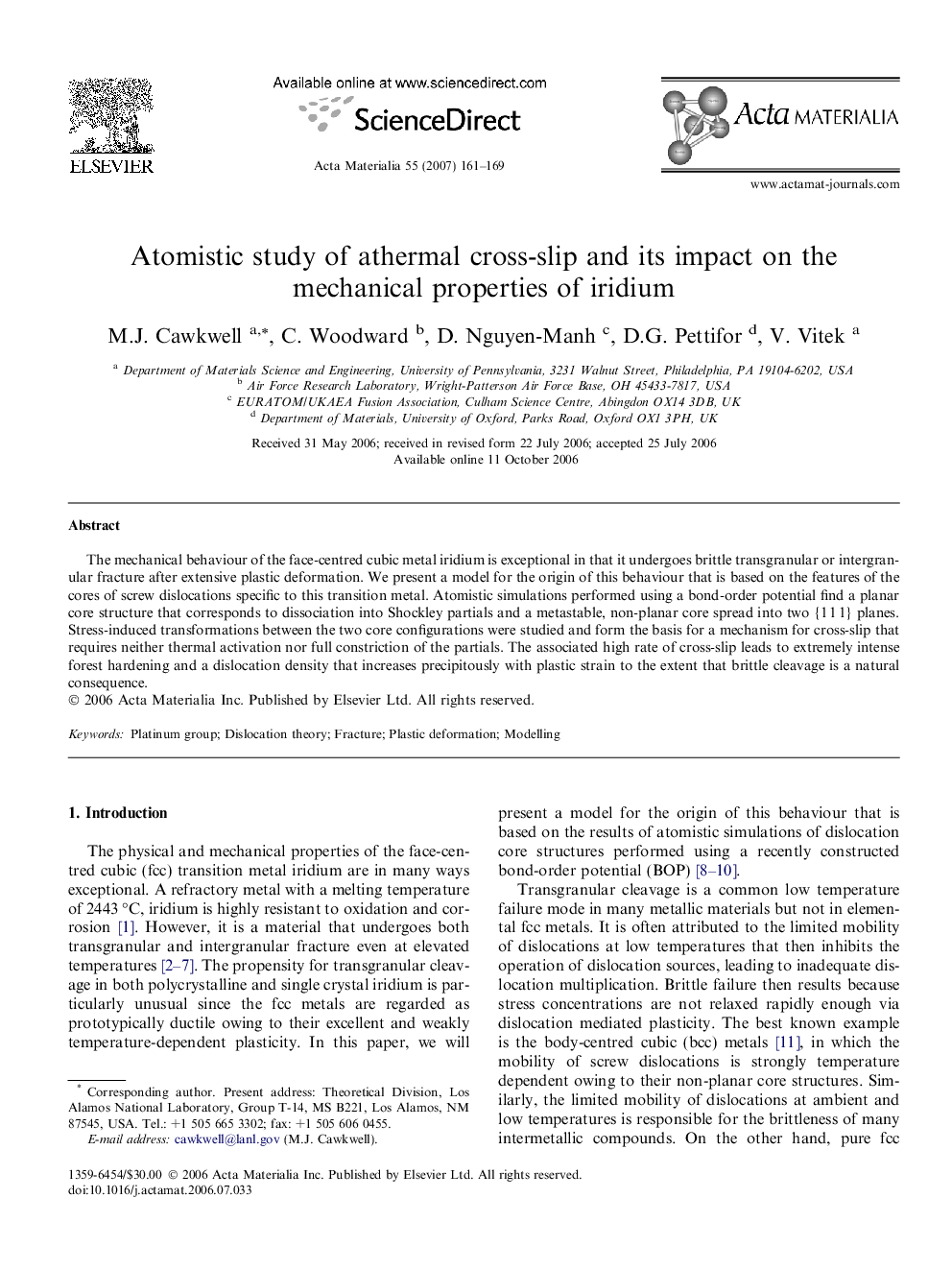| Article ID | Journal | Published Year | Pages | File Type |
|---|---|---|---|---|
| 1449898 | Acta Materialia | 2007 | 9 Pages |
Abstract
The mechanical behaviour of the face-centred cubic metal iridium is exceptional in that it undergoes brittle transgranular or intergranular fracture after extensive plastic deformation. We present a model for the origin of this behaviour that is based on the features of the cores of screw dislocations specific to this transition metal. Atomistic simulations performed using a bond-order potential find a planar core structure that corresponds to dissociation into Shockley partials and a metastable, non-planar core spread into two {1Â 1Â 1} planes. Stress-induced transformations between the two core configurations were studied and form the basis for a mechanism for cross-slip that requires neither thermal activation nor full constriction of the partials. The associated high rate of cross-slip leads to extremely intense forest hardening and a dislocation density that increases precipitously with plastic strain to the extent that brittle cleavage is a natural consequence.
Related Topics
Physical Sciences and Engineering
Materials Science
Ceramics and Composites
Authors
M.J. Cawkwell, C. Woodward, D. Nguyen-Manh, D.G. Pettifor, V. Vitek,
